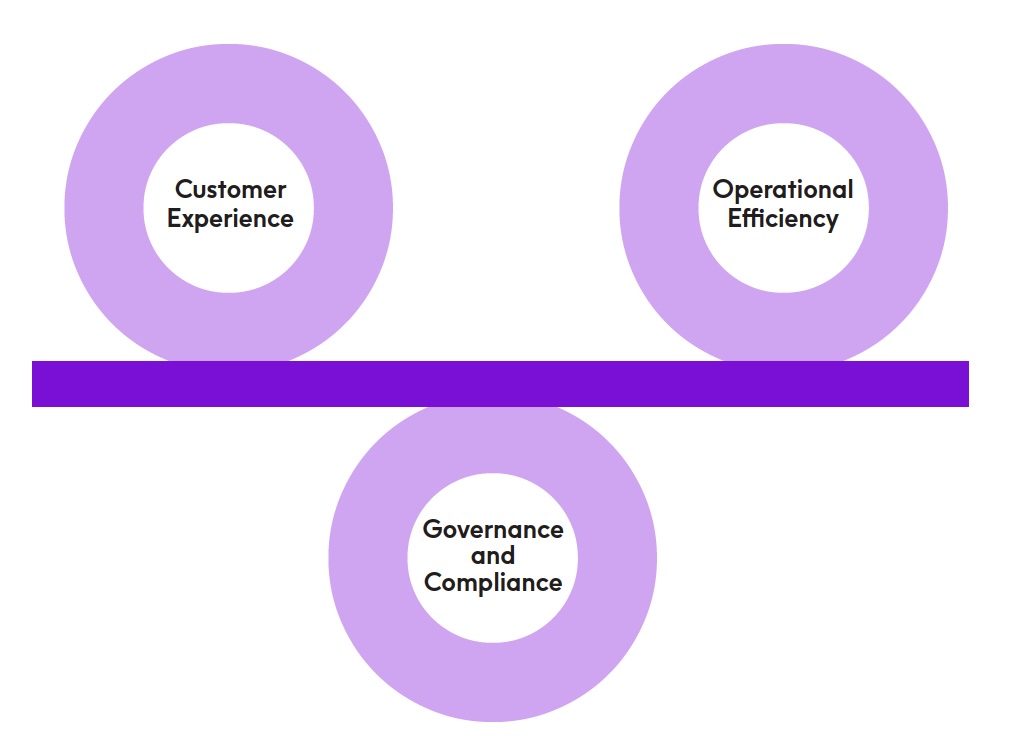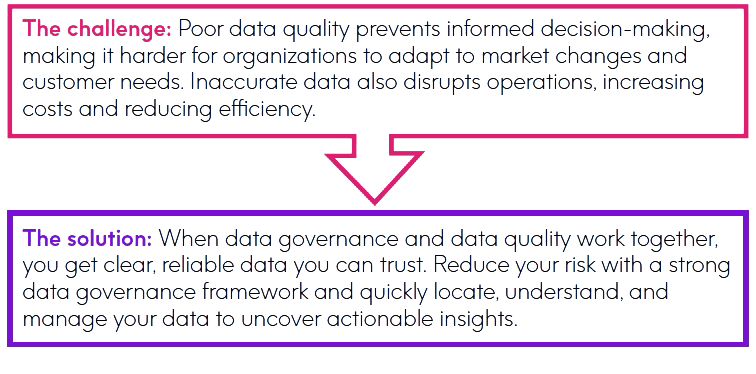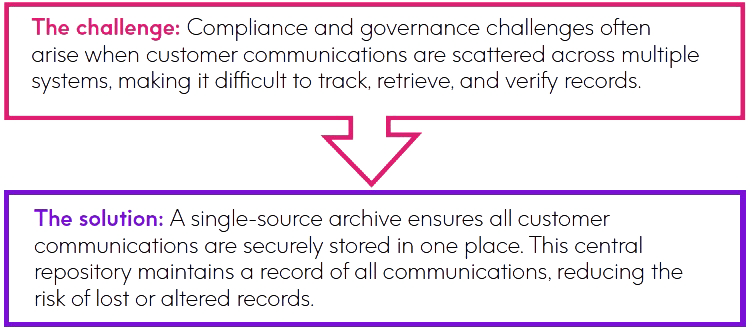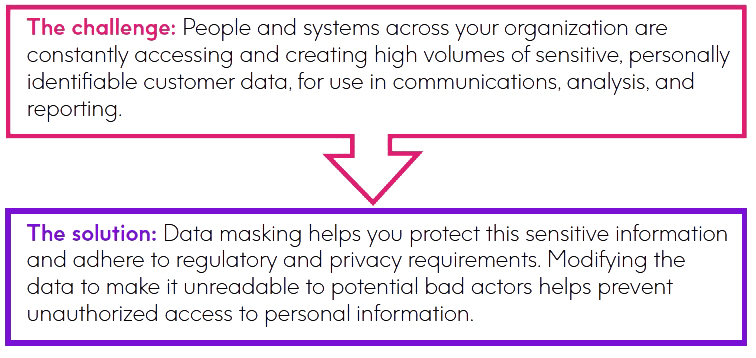eBook
The 5 Governance Controls You Need to Stay Ahead of Change This Year
The Balancing Act of Managing Customer Communications in Regulated Industries
Regulatory requirements are constantly evolving, making it challenging to balance personalized customer experiences with compliance and governance demands.
Without a structured approach to this balancing act, you may have fragmented communication channels, data silos, and regulatory uncertainty – which can introduce significant risks ranging from operational inefficiencies to costly compliance violations.
To avoid these risks, let’s explore how you can ensure engaging communications while improving compliance. Here’s a look at what we’ll cover:
- Key challenges you may face in your journey
- Essential governance controls for compliance
- Best practices for staying compliant and mitigating risk
- Risk assessment: questions to identify compliance gaps


Key Challenges: Compliance, Data Quality, and Inefficiencies
The pressure is on from growing regulations to ensure the communications and experiences you provide customers are secure, accurate, and compliant. Organizations often face several obstacles on the path to achieving this balance:
❌ Lack of visibility and governance in communication processes – Without centralized oversight, organizations struggle to track, audit, and control customer communications across multiple channels.
❌ Poor data quality – Poor data quality—whether inconsistent, incomplete, or inaccurate—makes it difficult to trust your data and can lead to compliance risks.
❌ Managing regulatory complexity and changes – Compliance mandates like GDPR, FCA, the EU AI Act, and Consumer Duty are constantly evolving, requiring your business to adapt quickly to avoid violations.
❌ Siloed, fragmented communication channels – 56% agree that siloed, communications are preventing them from delivering a connected customer experience.

The Cost of Non-Compliance
Failing to address these challenges introduces compliance risks that can have severe consequences for your business.
Consider this: The costs of non-compliance are around 3 times as high as the costs involved with being in compliance. Penalties of that scale can significantly impact your business, highlighting just how critical effective governance is. Non-compliance can also lead to operational disruptions, customer churn, and lasting reputational damage.
Robust data governance and compliance-driven automation are crucial to mitigating risk while improving operational efficiency and customer trust.
The costs of non-compliance are around 3 times as high as the costs involved with being in compliance.
Picture this
A leading regional bank faced significant challenges in its customer support operations. Many processes were manual and costly, including:
❌ Large-scale local printing and fulfillment for customer communications.
❌ On-demand letter generation and check creation, leading to inefficiencies.
❌ Reconciliation and auditing efforts that required extensive manual work.
❌ No documented audit trail for approval processes related to contracts and endorsements.
❌ Delays in policy binding occurred due to a lack of insights into approvals.
With simple governance and compliance controls this regional bank achieved:
✔ An Improved processes for creating, tracking, managing, and approving new content and endorsements, ensuring full auditability.
✔ A structured, trackable audit trail with a future-ready online system.
✔ Faster audit response times, allowing brokers and customers to access all communications securely and efficiently.
5 Essential Governance Controls for Compliance
To effectively manage compliance risks and ensure governance across your customer communications, you need a structured approach to oversight.
Implementing these governance controls will help you mitigate errors, streamline regulatory adherence, and protect both your business and customers. Here are five key governance measures that will help keep you compliant and efficient:
1. Data Governance and Data Quality Controls are key

2. Audit trails: simplify audits and ensure transparency.

3. Single source archive: centralize and control communications securely.


4. Data masking & PII protection: safeguard sensitive customer data.

5. Review & approval workflows: streamline for faster compliance.

Best Practices for Staying Compliant and Mitigating Risks
Let’s bring together what we’ve covered so far and outline three best practices that will help you proactively manage risk, maintain governance, and ensure seamless customer communications:
✔ Manage all your customer communications needs in one platform for easy tracking, approval, and archiving.
Keeping customer communications scattered across multiple systems increases the risk of inconsistencies, compliance gaps, and audit challenges. A centralized platform streamlines oversight, providing full visibility into communication workflows.
This ensures a clear audit trail, reducing the risk of compliance violations and making it easier to demonstrate adherence to regulatory requirements when needed.
✔ Store all communications securely in one place, making it easy to access records and view what was sent, when, and to whom.
Without a structured archiving system, retrieving past communications for audits, regulatory reviews, or dispute resolution can become a time-consuming and error-prone process.
A secure storage solution minimizes the risk of missing or misplacing critical communications, ensuring quick retrieval for compliance audits and other instances when you need it most.
✔ Maintain one record of all updates and approvals to speed up audits and reduce your compliance risks.
If you have multiple teams that regularly make edits and approvals without a standardized process, you risk unauthorized changes and discrepancies which can lead to compliance failures.


Assess Your Risk: Questions to Identify Compliance Gaps
To ensure your organization stays compliant and reduces risk, it’s critical to assess where you stand today and identify potential gaps in your compliance strategy. To help you get started, we’ve assembled a list of questions to help you do just that – quickly:
✀ Are you able to quickly tell what changes have been made to your customer communications and when?
✀ Do you have a way to track whether a customer received a communication electronically?
✀ Are print deliveries tracked (Informed Visibility)?
✀ Can business users see what was sent to a customer (as-delivered communications)?
✀ Do you have documented disaster recovery (DR) plans that are reviewed on an annual basis or more frequently?
✀ How often are ‘disaster recovery (DR) exercises conducted?
✀ Do you have a documented process for granting, reviewing, and revoking user access
✀ Are you SSAE (Statement on Standards for Attestation Engagements) compliant?
✀ Does your business require PCI DSS (Payment Card Industry Data Security Standard) compliance?
Did you answer “no” to one or more of these questions?
Precisely customer communication solutions help you mitigate risk with easy-to-manage governance controls that simplify complex industry regulations.